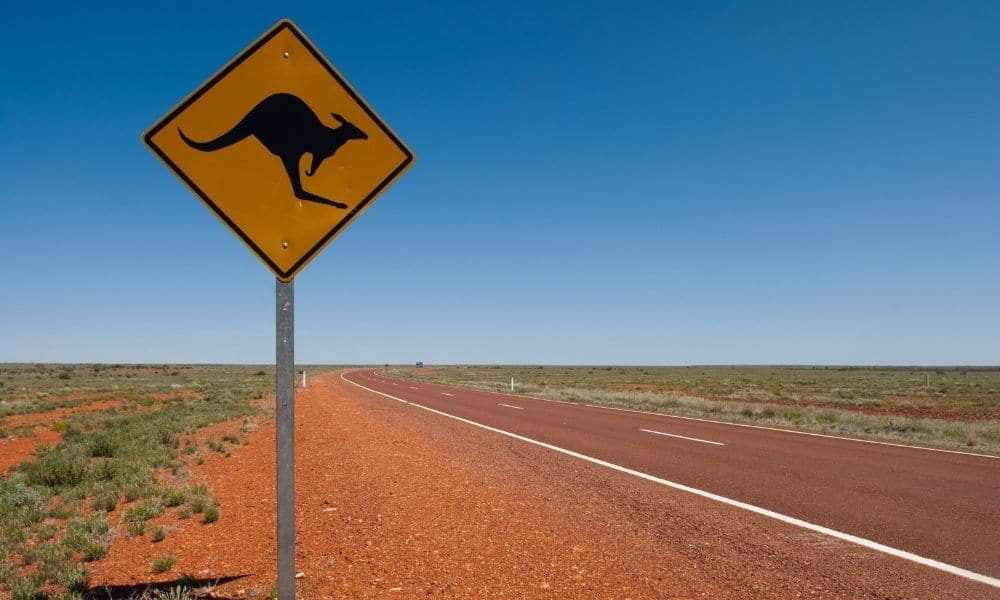Hazard Marker - Obstruction Marker sign design plan - hazard markers
Cyberweld
Parking signs explain whether a car can park in a certain position, how long for, if a ticket is required, whether it’s a clearway, a no stopping zone or a loading zone. Parking signs generally contain more detail and information that other road signs.
Whether you’re on a back road in the middle of nowhere or a major metropolitan freeway, road signage is an integral part of keeping Australian roads safe.
For example, to reduce speed, or if they are going the wrong way, i.e. entering the freeway from the wrong side. Signalling that the driver is approaching the end of freeway is also a common information sign used on freeways.
BUY TEMPORARY FENCING IN MELBOURNEBUY TEMPORARY FENCING IN PERTHBUY TEMPORARY FENCING IN ADELAIDEBUY TEMPORARY FENCING IN BRISBANEBUY TEMPORARY FENCING IN SYDNEY
If you want to learn more about Australian road signs, consider visiting the state or territory’s relevant road authority.
They will also signal curves or sharp turns ahead, giving you the opportunity to appropriately adjust your driving in a timely manner.
Arc ZoneTungsten Grinder
In Australia, road warning signs are also used to inform drivers of animals that may be in the area, such kangaroos, koalas or wombats, which are known to wander onto the road and can cause significant damage to cars if struck while driving.
Australian road signage are something we see every day but likely don’t know what constitutes a regulatory road sign versus an information sign.
In this blog we will investigate the meanings of the main types of Australian road signs – the regulatory, guide and information, roadworks, warning, and hazard marker signs.
Arc zoneaustralia
You must follow signals from any traffic controller that is present, as well as give way to all workers on the site.Roadworks often mean you will need to slow down, generally to 40 km h or 60 km h, depending on where the roadworks is taking place. The speed limit on these roadwork signs are enforceable – meaning if you fail to follow them, you can be fined.

While many governing laws and regulations can differ across states and territories, Australian road signage is administered by national guidelines, meaning there are very few differences between road signs in Australia.
The first set of rules for Australian road signs were made by the National Transport Commission in 1999. Part of these rules state that by standard road signs must use the AS1744 series fonts, based on the USA’s Highway Gothic typeface.
Information signs are recognised by their green, white and black colours and provide helpful details that may assist road users. They will generally inform drivers of what’s coming up ahead. Guide and information signs are like parking signs as they may contain more text rather than symbols.
Other types of regulatory signs include ‘Pedestrian Crossing’, ‘Keep Left’, ‘No Entry’, ‘One Way’, ‘No U Turn’ and ‘Start Freeway’ signs, as are the ‘Slow’ and ‘Stop’ signs held by traffic controllers in road work areas.
A route marker is a road sign that provides drivers information on the route they are travelling, approaching, or exiting from. Some common examples are numbers that identify how far away you are from connecting towns and cities.
Warning signs use diagrams and symbols to alert you of potential hazards or dangers up ahead – for example, a black cross means a crossroad is ahead, or a black T means the road ahead is ending.
Roadwork signage is temporary but must still be obeyed – this means that even if you know the road like the back of your hand, you should always be vigilant in looking out for signs.
Arc-Zone Welding Positioner
While it can be easy to simply lump all road signs in Australia into one category, there are differences in how signs are managed and used depending on their purpose.
Ready to secure your site with premium temporary fencing solutions? Call us today and speak to a temporary fencing expert who can tailor a solution to meet your exact needs.
Stop signs are generally used at intersections where it is harder for drivers to see oncoming traffic, which is why they are required to completely stop rather than give way. Drivers are required to come to a complete stop at or before the intersection, check for oncoming traffic or pedestrians and then continue when safe to do so.
Ck worldwide
Some common examples of these types of road signs are left and right markers (used at curves or roundabouts), island markers, end of road markers (used at T-junctions) and narrow markers.
At TTFS, we have a large range of road signage for all your traffic control requirements including, Stop/Slow Traffic Bat, Hexaweight and Sandbag, Class 1 Yellow Frame and many more. Get in touch with our friendly team today and we will be more than happy to assist with any queries you may have.
They are easy to recognise as they are usually combinations of white, black, red, yellow, and green. A good rule of thumb is that if you can receive a fine for not following the road sign’s instructions, it’s probably a regulatory sign!

Arc-Zone coupon code
Regulatory signs are the most common traffic signs you will see and are used to improve safety of road users. They indicate what you can and cannot do on the road and must be followed, otherwise you may incur a fine.
When you see the ‘Roadwork Ahead’ sign, that is your cue to reduce your speed limit and look for further instructional road signs, as well as to look for any potential hazards.
Some road warning signs may be red, such as ‘prepare to stop’ signs, or a bright green colour, such as a warning for pedestrians or children that may be in the area.
Accompanying signage can also alert you to hazards such as loose stones, road or lane closures, upcoming temporary traffic lights and a lack of road markings, so it’s important to be aware of what signs are around you in roadworks!
Give way signs are used at intersections, roundabouts, and cross walks to signify to simply ‘give way’ to foot traffic, drivers or even animals.
Arc zonetig
Regulatory signs are usually red and/or black with a white background. However, they can also be yellow or orange (general warning), green (permitted traffic or direction) and fluorescent green or yellow (pedestrian crossing or school zone).
You can find out more, along with some handy links, at the Australian Government’s Road and Transport Authority’s website.
Arc zonetable
Road signs are used throughout the country to improve the safety of road users and foot traffic. Whether they are used as a warning to upcoming hazards, roadworks, or just a change in road conditions. You will come across hundreds of road signs on your daily commute to work or on your family road trip.
Hazard markers are signs used to signify when approaching an obstacle or driving past a hazard on the road. These road signs are easy to spot with their black and white colours and abstract patterns.









 13322766566
13322766566